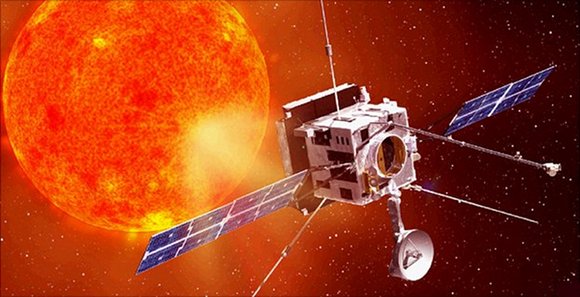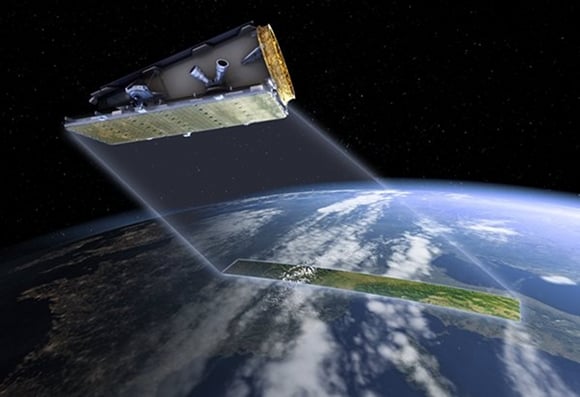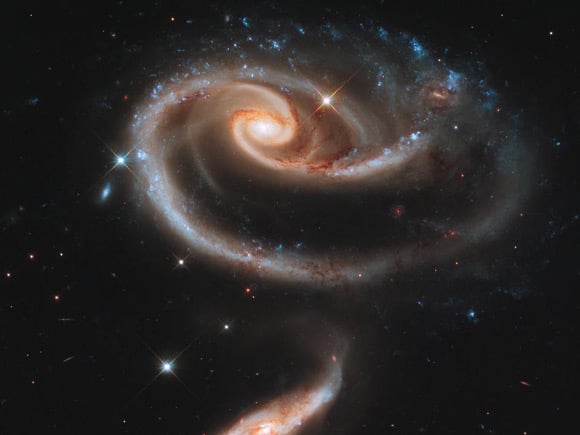This article is more than 1 year old
A year in spaaaaace: El Reg looks back on 2011
Era of the spaceplane ends, robot exploration continues
Sharing space in space
The US and Russia are unquestionably still the main players in our universe, but other countries are starting to take more of an interest in the wonders of our galaxies as well.
The European Space Agency is fast becoming an important player in the space (pun intended), helping out their Russian boffin mates with contacting Phobos-Grunt and sending astronauts and very heavy space trucks up and down to the International Space Station, but that's not all it's been busy with.
The agency announced in July that it had finished a billion-pixel camera for use in its Gaia mission to chart a three-dimensional map of the Milky Way, due to start in 2013.
Aboard the ISS, with a little help from NASA astronaut Ron Garan, the agency shot the first 3D footage in space on a futuristic camera developed by the ESA.
The ESA is also hoping to get a space probe closer to our Sun than any other craft has ever managed.
The Solar Orbiter is aiming for a 2017 launch on a NASA-provided Atlas rocket, after which it will pass within just 26 million miles of the Sun.

Artist's impression of the Solar Orbiter. Credit: ESA
China's Martian satellite went down with the Phobos-Grunt, but it doesn't seem to have dented their enthusiasm for space too much.
This year saw the Asian nation become the third country after America and Russia to master the art of docking.
The Shenzhou-8 unmanned capsule set out at the start of November on its trip to the Tiangong-1 or 'Heavenly Palace' module, which had been orbiting since September.
The craft then succeeded in coupling with the module not once, but twice, before returning safely back to Earth.
China is planning Shenzhou-9 and Shenzhou-10 for next year, and hoping to man (or woman) at least one of them after the docking success.
All of these missions are stepping stones towards China's very own space station, which the space agency is hoping to have aloft sometime this decade.
Meanwhile, the UK is also getting in on the act with its very own space agency - the UK space agency (good name).
The new body got the go-ahead in April this year and so far seems mostly interested in satellites.
To be fair, it's not a good time for any government-related body to be sticking its hand out for money in Blighty, so small ambitions are probably good for now.
These include the CubeSat mission, lots of teeny-tiny satellites made from off-the-shelf components leading, the agency hopes, to more and cheaper launches. The design for UKube-1, the first of the microspacecraft, was approved in November.
Sticking with satellites, George Osbourne's Autumn Statement on the UK's budget included funds earmarked for science, part of which will go on a British-built satellite constellation.

Artist's impression of a NovaSAR satellite over Earth. Credit: SSTL
"NovaSAR will keep us at the forefront of space technology, and will drive growth and innovation as governments and businesses across the globe develop scientific and commercial uses for the data," science minister David Willetts enthused.
However, the cash is still conditional on agreeing a business case and "other contract terms".
Anyway, the UK can't expect to be taken seriously as a proper space agency until it gets some telescopes on the go to send back amazing shots of our cosmos, a task the Hubble Space Telescope has been doing for 21 years this year.
To celebrate the anniversary, NASA released a suitably awe-inspiring image from the space observer that showed a spiral galaxy the agency decided looked like a galactic rose.

The galactic 'rose'. Credit: NASA, ESA, and the Hubble Heritage Team (STScI/AURA)
It also shows just why it's so worth it for governments to find the budget to keep sending spacecraft to the stars. ®
